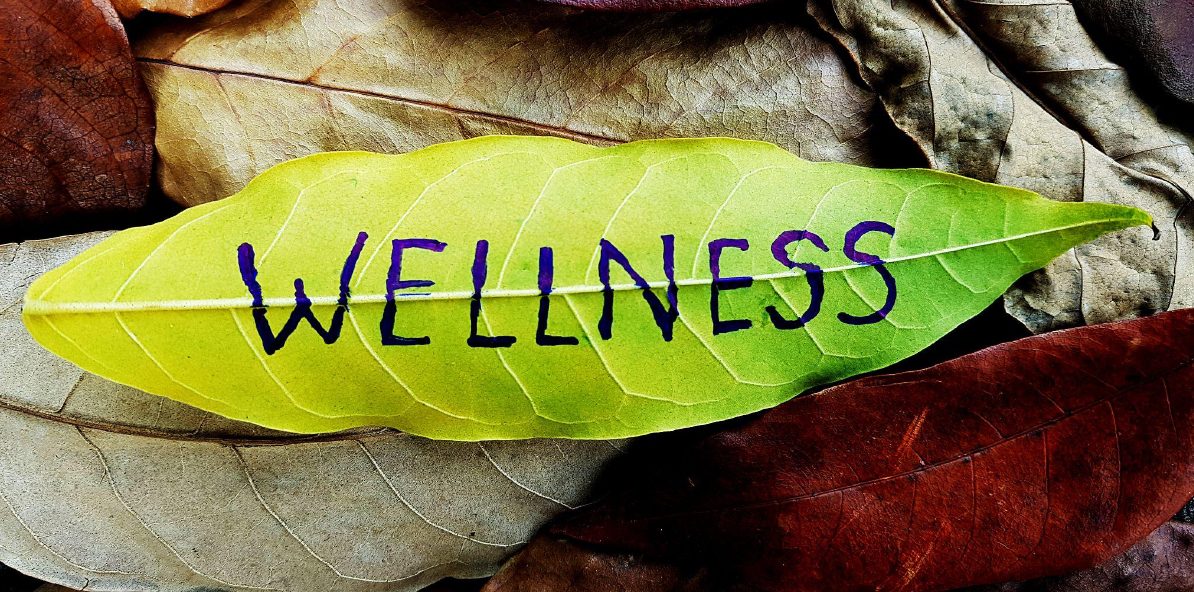10 Mindfulness Exercises to Perform at Home
Practicing mindfulness is a great way to take some time to focus on yourself, pay attention to your feelings, and identify the things that cause you stress.
Many mindfulness activities exist to help you become more comfortable with the practice and hold onto a mindful attitude throughout the day.
Ready to learn how to practice mindfulness and make it a positive part of your daily routine?
Here are some great mindfulness exercises you can do in just a few minutes at home.
1. Be Present
This is the most basic mindfulness exercise you can perform at home (or anywhere you are), yet it’s no less useful than other exercises.
All you need to do is close your eyes and focus on the present moment.
Sound too simple to be true? It’s not!
Now, you can’t expect to shut everything out and achieve pure and instant calm. There will still be distractions, worries, and restless thoughts in and around you. Further, setting a goal like that is actually antithetical to the process of mindfulness.
The key to practicing mindfulness isn’t focusing on whether you’re succeeding or failing. The attempt at being mindful is itself practicing mindfulness and is the most important part of the journey.
Your mind might continue to wander, but the fact that you’re putting effort into focusing on the present moment at all means you’re being more mindful than your baseline level of attention allows.
2. Deep Breathing
Deep breathing is another extremely simple but effective mindfulness technique.
To do a deep-breathing exercise, find a comfortable place to sit. Close your eyes and let yourself breathe naturally for a few seconds. Then, take 3–5 slow, deep breaths in and out.
Inhale through your nose, feeling the air fill your lungs. Hold the air in your body for a second. Then, release it slowly, allowing your body to relax as the air exits.1
If you’re feeling tense, you may be able to feel your muscles relax more fully after each deep breath, especially at the start of the exercise. Continue to breathe slowly and with a steady rhythm.
For some people, using a white noise machine may help promote focus and relaxation. Each time you notice that your thoughts have drifted, gently bring your focus back to your breathing.
3. Body Scan Meditation
To start the body scan mindfulness technique, sit or lie on your back on a carpet, yoga mat, or bed. You can also sit in a comfortable chair that lets you relax with good posture and your feet on the floor.
Once you’ve found a comfortable position, it’s time to stay still. Take deep breaths, paying attention to your breathing and the way you inhale and exhale.
Next, you’ll move your focus to your body. Pay attention to the sensations you feel, including the way your body touches the floor or chair and the way your clothes rest on your body. Focus on how the environment around you feels, too.
Then, begin moving your focus slowly from one body part to the next. Start with your toes and feet, thinking about the way they rest on the ground, how sensitive they feel, and general sensations.2
When you reach your head and face, you’ll have completed a full-body scan, but that’s by no means always necessary.

4. Seated Meditation
Seated meditation is a broad category of meditation styles that can include deep breathing, music mindfulness, guided meditations, and other mindfulness-based stress reduction techniques.
Seated meditation is a simple, stationary mindfulness exercise that you can enjoy anywhere there’s a comfortable place to sit in a quiet environment.
You’ll want to sit with your back straight and maintain good posture while you do this exercise. To make yourself comfortable, you can consider using a back support pillow.
You might’ve seen people doing seated meditation in the lotus posture, which has its origins in Hindu and Buddhist traditions.3 But that is not a requirement, especially for longer sessions.
Once you’ve found a comfortable position, start to draw your focus to each inhalation and exhalation. Many mindfulness activities start with the breath. From there, you can focus on a single sound, use essential oils for diffusers with your favorite calming fragrance, or simply consider the silence around you.
Just like other forms of mindfulness, you should try to notice when your thoughts drift and bring them back gently to your breathing or the point of your focus.
5. Walking Meditation
Walking meditation is a type of activity meditation—where you practice mindfulness while performing some activity (as opposed to sitting still in a quiet room).
Walking meditation is an incredibly flexible activity. You can do it while walking around your bedroom or office for one minute in between meetings or when you wake up in the morning.
Or you can walk or hike outdoors, paying attention to the nature around you as you practice mindfulness.
To practice walking meditation, follow these tips:
- Pay attention to your breathing, but don’t worry about changing it.
- Try to walk with a steady rhythm. You might feel your breathing fall into a rhythm with your steps. That’s great, but it’s not something you have to achieve.
- Always pay attention to your surroundings, especially if you’re crossing streets or walking outdoors.
6. Guided Meditations
For many people, practicing mindfulness seems like an impossible task in a world so full of distractions and responsibilities. That’s where guided meditation is so valuable.
In a guided meditation session, a guide leads you through the phases of the mindfulness exercise. Guided meditation can take many forms, but whichever type you choose, there will be a person leading you on your mindfulness journey.
This can be invaluable for beginners as they learn to accept the imperfections of a meditation session and become more familiar with their emotions.
Many other styles of meditation on this list work as guided meditations. For example, in a guided body scan mindfulness session, the facilitator will gently lead you from body part to body part, gently reminding you to stay focused on the activity.
You can find guided meditations in many forms, including online videos, podcasts, popular mindfulness apps, and even on music streaming services.
7. Morning Wake-Up
Morning meditation can be a refreshing way to start each day. By paying close attention to how your body feels for a few minutes after you wake up, you can take better stock of your status before you dive into your responsibilities.
An important part of mindfulness is being aware of how you feel. Doing morning meditations can help you prepare yourself for what you have to do and better understand why you might feel tired, sore, overwhelmed, or energized.
8. Mindful Exercise and Workouts
For an activity that’s most often performed in a still, quiet position, exercise might seem incompatible with mindfulness. But it is possible to be mindful while exercising, just as you can bring your mindful attitude to any part of your life.
In fact, many people find running, bicycling, and other cardio exercises meditative.
Mindful exercise requires you to notice the way your body feels as you perform each movement.
Mindful exercise probably won’t work for your personal record attempt or high-intensity circuit, but a moderately intense, steady exercise session can be the right kind of focus for people who struggle to sit still but still want to start a mindfulness journey.
9. Mindful Yoga
Mindful yoga is such a popular mindfulness activity that it deserves its own section.
You’ll find many videos online guiding you through the motions, and you may even be able to find local groups or college classes that practice mindful yoga in person.
Yoga lends itself well to mindfulness because it’s a slow and deliberate form of exercise. Entering and holding different poses gives you ample opportunities to notice your breathing, feel your body supporting itself, and appreciate the present moment.
A wide range of yoga poses also exist for everyone from beginners to experts. That means there’s no great added stress that might distract you from the mindfulness aspect, as there might be if you come across a steep hill during a run or have to wait for equipment at the gym.
10. Mindful Journaling
Journaling is another popular mindfulness activity that can help you pay attention to the present moment and look back on the progression of your mindfulness journey.
Mindful journaling can be extremely open-ended, or you can use it to record your feelings, causes of stress and anxiety, and the places your mind drifts to as you meditate. You might not write fully formed thoughts with proper grammar, and that’s all right.
Like mindfulness in general, mindful journaling is more about the act than the result. The key isn’t what you write, but how you feel while you’re writing.
Whether your journal’s pages look like stream-of-consciousness paragraphs or lists of words and phrases when you’re finished, the important thing is that you made yourself mindful of your thoughts and feelings for a brief period.
Then, you can try to carry that mindful attitude throughout the rest of your daily activities.
There are some benefits to this written record of mindfulness, though.
Over time, you can look back at past entries and recall how you managed experiences in the past. You can also see evidence of your progress, acknowledging that you’ve changed the way you think by practicing mindfulness.
Find Your Favorite Mindfulness Exercise
Practicing mindfulness is a personal journey and, because of that, the best mindfulness exercise will be specific to your preferences.
Whether you choose silent deep breathing activities, mindful yoga, or another mindfulness technique entirely, enjoy the journey and appreciate each moment.
Medical Disclaimer: This content is provided for informational purposes only and not intended to be a substitute for professional medical advice, diagnosis or treatment.
Sources

